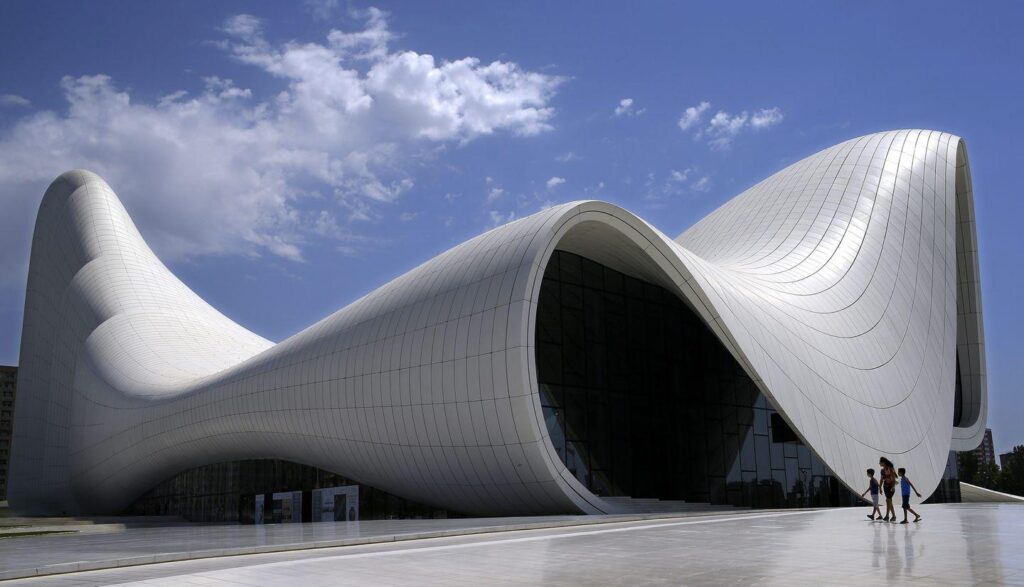The Shenzhen Science & Technology Museum: A Fusion of Innovation and Tradition
In a vibrant city where modernity intertwines with heritage, the Shenzhen Science & Technology Museum emerges as a symbol of future architectural brilliance. Designed by the renowned Zaha Hadid Architects, this extraordinary edifice not only transforms Shenzhen’s skyline but also redefines what a museum can be. With its organic shapes and engaging spaces, the structure encourages exploration and curiosity, embodying the essence of scientific inquiry. This article explores the design elements, features, and significance of this exceptional project that exemplifies how Zaha Hadid Architects continues to challenge architectural norms while creating an essential center for education and inspiration in one of China’s most dynamic urban environments.
Unique Architectural Features of the Shenzhen Science & Technology Museum
The Shenzhen Science & Technology Museum is a showcase of innovative architectural designs that reflect Zaha Hadid Architects’ hallmark fluidity and creativity. The building’s exterior boasts curved lines and complex geometrical patterns that evoke movement and interconnectedness. Inside, abundant natural light pours through large glass panels, fostering an inviting ambiance that enhances visitors’ experiences. The incorporation of sustainable materials underscores the museum’s dedication to environmentally conscious design while ensuring harmony with its urban context.
Within its walls lies a commitment to interactive learning through advanced technology and immersive environments. Notable design aspects include:
- Adaptable Exhibition Areas: Spaces designed for versatile displays that promote dynamic exhibitions.
- Smart Navigation Systems: Cutting-edge digital interfaces guide visitors seamlessly throughout their journey.
- Multipurpose Venues: Areas crafted for diverse events ranging from scientific lectures to artistic showcases.
This blend of aesthetic appeal with practical functionality positions the museum as not just an archive but also as a source of inspiration, representing what public cultural spaces can achieve in contemporary society.
Commitment to Sustainability in Zaha Hadid Architects’ Latest Endeavor
The completion of the Shenzhen Science & Technology Museum illustrates an innovative approach toward sustainability that aligns state-of-the-art design with ecological stewardship. This project emphasizes several key strategies aimed at reducing environmental impact:
- Integration of Renewable Energy Sources: Solar panels installed on expansive rooftops harness natural energy for operational needs.
- Water Conservation Initiatives: Rainwater collection systems alongside greywater recycling minimize resource waste while ensuring sustainable water management.
- Use of Eco-Friendly Materials: A focus on locally sourced materials reduces carbon emissions linked to transportation processes.
Moreover, thoughtful architectural planning enhances energy efficiency through unique design features. The building’s flowing form captures sunlight effectively while promoting airflow—this reduces dependence on artificial lighting systems as well as heating/cooling mechanisms. To further illustrate these sustainability efforts, consider some outlined environmental performance objectives:
| Goal | Description |
|—————————–|——————————————————-|
| Decrease in Carbon Footprint | Aiming for a 30% reduction compared to traditional buildings |
| Enhanced Energy Efficiency | Targeting 50% savings via optimized designs |
| Zero Waste Policy | Implementing waste minimization during construction |
Fostering Community Engagement Through Architectural Design
The unveiling of the Shenzhen Science & Technology Museum by Zaha Hadid Architects signifies an important advancement in merging architecture with community interaction. Its fluid structures invite guests to engage with exhibits beyond conventional museum experiences; innovative design principles transform architecture into an extension conducive to learning—stimulating curiosity among visitors while encouraging exploration within its walls.
This architectural wonder serves not only as a center for scientific discovery but also acts as a platform for community engagement through various interactive installations designed specifically for collaboration among individuals from all walks life. Key components include:
- Community Courtyards: Open areas intended for gatherings or events fostering social connections.
- Flexible Exhibition Zones: Adaptable spaces capable accommodating different themes or formats.
- Scenic Walkways: Pathways designed harmoniously integrating natural landscapes into built environments.
Additionally,
| Feature | Description |
|————————|——————————————————|
| Fluid Architecture | Instills feelings movement throughout space |
| Interactive Learning | Engages audiences via hands-on educational activities|
| Sustainable Practices | Incorporates eco-conscious materials alongside efficient systems|
The strategic layout optimizes visitor interactions while showcasing groundbreaking advancements in science—ultimately reshaping how architecture serves communities today.
Conclusion
As it stands proudly amidst bustling city life, the Shenzhen Science & Technology Museum epitomizes Zaha Hadid Architects’ relentless pursuit towards redefining architectural innovation standards globally. This remarkable addition enriches both scientific inquiry along technological progress narratives within China’s landscape—it reflects deeper themes surrounding connectivity alongside sustainability efforts made possible by visionary thinking behind its creation process itself! With captivating forms paired together dynamic spatial arrangements—the museum invites everyone explore wonders science offers within environment where creativity meets knowledge seamlessly intertwined together! Looking ahead—the institution represents pivotal strides forward promoting public engagement surrounding science technology inspiring generations yet come! Indeed—the legacy left behind by Zaha Hadid lives on vividly reminding us architecture transcends mere structures; it enhances human experience fosters sense belonging amidst ever-evolving world we inhabit today!
